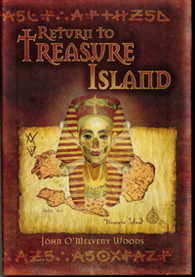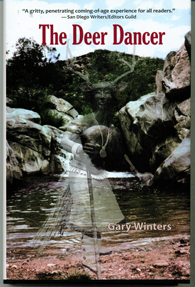
By Donald H. Harrison
SAN DIEGO—Lately I have been mixing into my reading “YA” fiction – fiction for Young Adults. I have been experimenting with the idea of writing such a story myself, and by reading the works of other authors in this genre, I hope to get a feeling for YA rhythm and flow.
Whether this shall be accomplished I cannot say, but my research has yielded an unexpected and pleasurable side benefit – more evidence of the truth of San Diego Jewish World’s slogan, that “there is a Jewish story everywhere.”
The two most recent YA books I read were cases in point: Return to Treasure Island by John O’Melveny Woods (ISBN 988-0-9729761-3-8) and The Deer Dancer by Gary Winters (ISBN 978-0-916251-00-0). Both are adventure stories distributed by Sunbelt Publications of San Diego, the company which also had published my biography of San Diego’s Jewish pioneer, Louis Rose.
Return to Treasure Island is an admirable, although perhaps controversial, sequel to the famous story of Treasure Island by Robert Lewis Stevenson, bringing back for another adventure the unforgettable James Hawkins and Long John Silver along with assorted pirates, buccaneers and freebooters.
I say “controversial” because the question immediately occurs what right does a modern-day writer have to appropriate the characters of a classic work of fiction, and bring them alive again? My answer would be “every right” if everyone could do it as well and as true to the original as Woods has. But I anticipate others might debate me on the sanctity of the classics.
The Deer Dancer is a coming of age story about a Yaqui Indian named Juan Araiza – whom we might be tempted to name “Horacio Algerez,” as this is a story of an impoverished, uneducated young man who, by hard work and careful study, advances to the very top echelons of Mexico’s politics. Despite the heights to which he ascends, he never forgets his simple and honest roots. I wasn’t totally enamored with this book, as it seemed to switch tone and purpose in the middle and become more a political polemic than the adventure of a young man. Also, I was uncomfortable with the sex scene, wondering whether its inclusion made the book inappropriate for the YA audience.
Neither of these stories, on their face, is Jewish. But in their telling, each story is unobtrusively flavored with a subtle Jewish tam. In the case of Return to Treasure Island, that one-legged cur, Long John Silver –of all people—quotes a well-known Jewish proverb, without identifying it as such: “From your lips to God’s ears.”
And, in The Deer Dancer, the Torah story is retold of the pursuing Egyptians being drowned in the Sea as they chased Moses and the Israelites. At another point in the book, Araiza is instructed that Christianity’s “Golden Rule” –“Do unto others as you would have them do unto you” –has its parallels in numerous other religions. His informant tells him that Judaism teaches “What is hateful to you, do not to your fellow man.” Islam says: “No one of you is a believer until he desires for his brother that which he desires for himself.” Hinduism urges: “Do nothing to others that which if done to you would cause pain.” And Buddhism exhorts: “Hurt not other with that which pains yourself.”
These little asides—a Jewish proverb, a Torah citation and a brief comparison of religions– are not the substance of either book. They are simply seasonings that can make a Jewish reader—at least this one—smile with recognition and be pleased that in so many ways our Jewish religion and folkways have been positively received by so many others.
*
Harrison is editor of San Diego Jewish World

